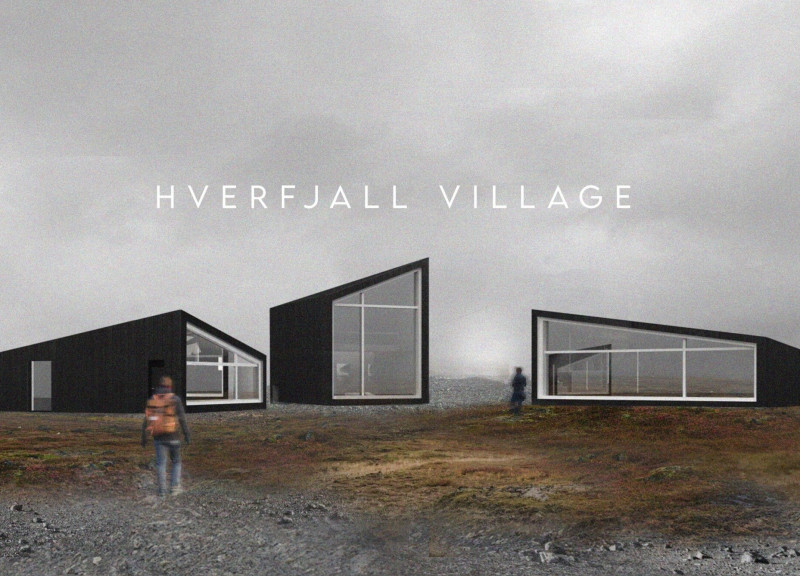5 key facts about this project
HVERFJALL VILLAGE is located near the Hverfjall volcano in Iceland. It serves various purposes, acting as a visitor center with a coffee shop, viewpoint, exhibition area, and information point. The design emphasizes flexibility, allowing for the addition or removal of structures without losing harmony. Buildings are placed along a pathway that follows the shape of the volcano, creating an engaging experience for those who visit.
Architectural Concept
The design draws on traditional Icelandic building styles while responding to the distinct characteristics of the landscape. By avoiding rigid lines and direct sight lines, the project promotes a flowing experience where structures blend into the surroundings. The circular form of the volcano becomes a central reference, guiding how spaces are shaped and connected.
Functional Components
Key areas within HVERFJALL VILLAGE are strategically arranged to encourage exploration and interaction. The coffee shop acts as the core of the site, positioned to offer the best views of the volcano. Other elements like the viewpoint and exhibition spaces add depth to the visitor experience, making it informative and engaging. The pathway not only connects these points but also serves as a route for learning about the unique geography around them.
Material Use
Materials chosen for the construction include charred wood for the exterior, providing protection against the harsh weather. Buildings are made from on-site poured concrete that is mixed with volcanic soil, ensuring they fit well with the landscape. The addition of recycled steel enhances the structures' strength while supporting sustainable building practices.
Design Details
Inside, spaces maintain a simple and practical look, focusing on their purpose. The coffee shop features design elements that reflect the slopes of the volcano, connecting the interior to the natural environment outside. Strategic light placements draw inspiration from the various patterns in the local terrain, enhancing the overall experience for visitors. The result is a space that feels integrated with the stunning landscape, inviting all who enter to appreciate the surroundings.























































